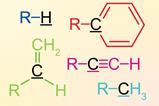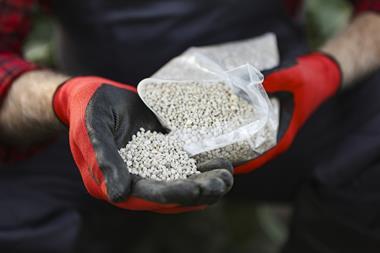Up to 70% of nitric acid remains undissociated when adsorbed on nanoparticles of ice, new research shows. This is in stark contrast to how nitric acid behaves in water and on bulk amorphous ice, where it dissociates fully.
‘Nitric acid is a key player in the composition of polar stratospheric ice clouds,’ comments Kevin Wilson, an expert in aerosol chemistry from the Lawrence Berkeley National Laboratory, US, who was not involved in the research. ‘[These clouds] drive a lot of chemistry related to ozone depletion. Understanding the molecular details of how a nitric acid molecule sits and either dissociates or not at an interface has a lot of consequences for understanding chemistry in the real world.’
Now, a team of researchers led by Michal Fárník from the J. Heyrovský Institute of Physical Chemistry, Czech Republic, and Jozef Lengyel from the TUM School of Natural Sciences, Germany has investigated the extent to which nitric acid dissociates on clusters of between 30 and 500 water molecules in a vacuum chamber. The team used negative ion mass spectrometry to detect water clusters with nitrate and hydroxide surface anions, which corresponded to clusters with dissociated and undissociated nitric acid, respectively. Notably, 50–70% of the adsorbed nitric acid remained undissociated on the nanoparticles at temperatures at which dissociation occurs on amorphous ice. One potential explanation for this observation is that acid dissociation is kinetically inhibited on the nanoparticles, relative to bulk behaviour.
‘What’s most interesting about this paper is that these nanoparticles are between a bulk ice sample and very small clusters. In terms of generating a realistic environment, the experiment does that,’ says Wilson. ‘Nanometre-sized particles play a very important role in the atmosphere,’ explains Fárník. ‘They might be not the most populated by number but, due to their small size, they provide a huge surface for the adsorption of molecules and surface-catalysed and heterogeneous chemistries.’
Next the team want to figure out how cluster size and temperature affect acid dissociation. ‘The ideal approach would be to have a look at this [behaviour] with particles of different sizes to see at which size the acid dissociation prevails and at which it is inhibited,’ notes Fárník. ‘[On the other hand], heating these clusters in a vacuum is not easy and measuring their temperature is even more difficult, but we have some ideas which we would like to explore.’
References
This article is open access
A Khramchenkova et al, Phys. Chem. Chem. Phys., 2023, DOI: 10.1039/d3cp02757k

















No comments yet